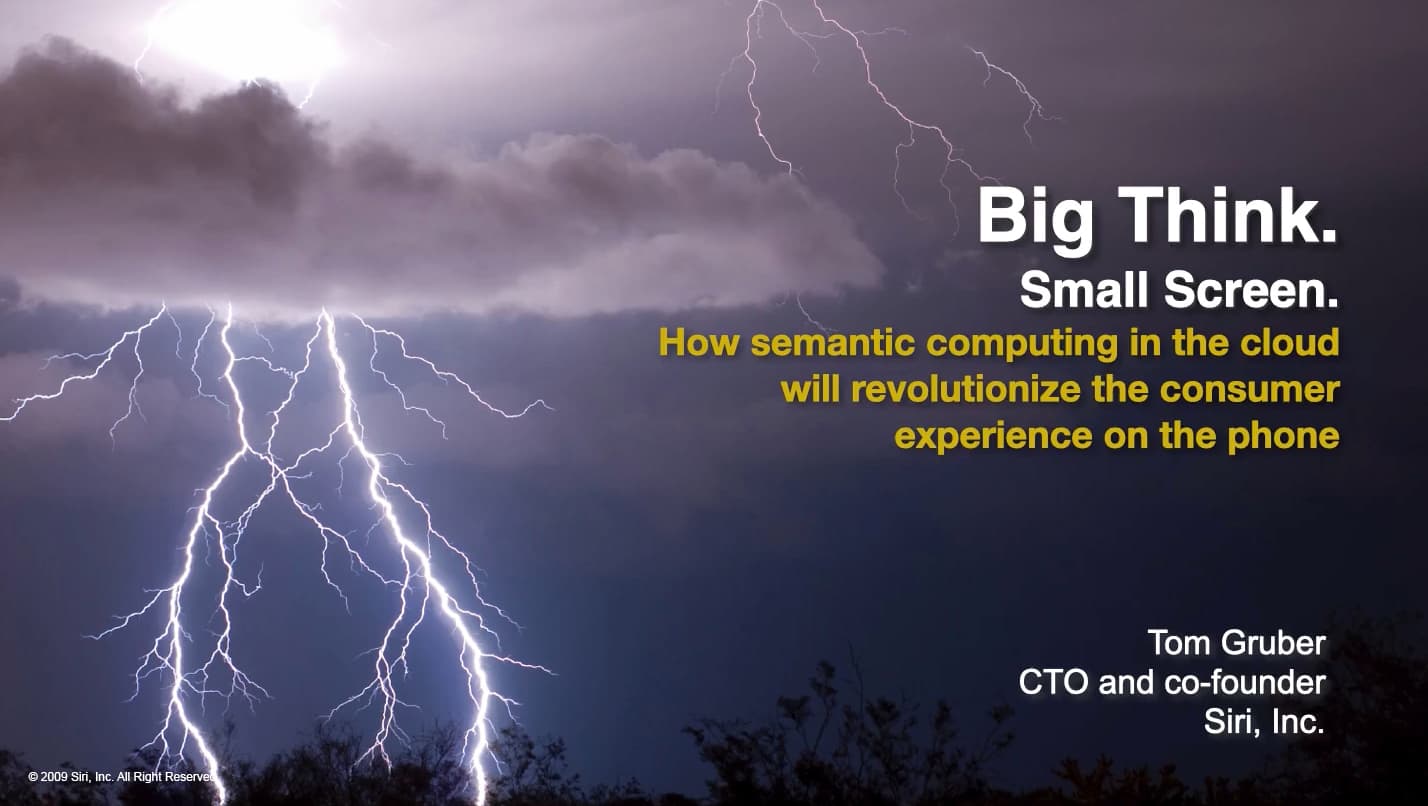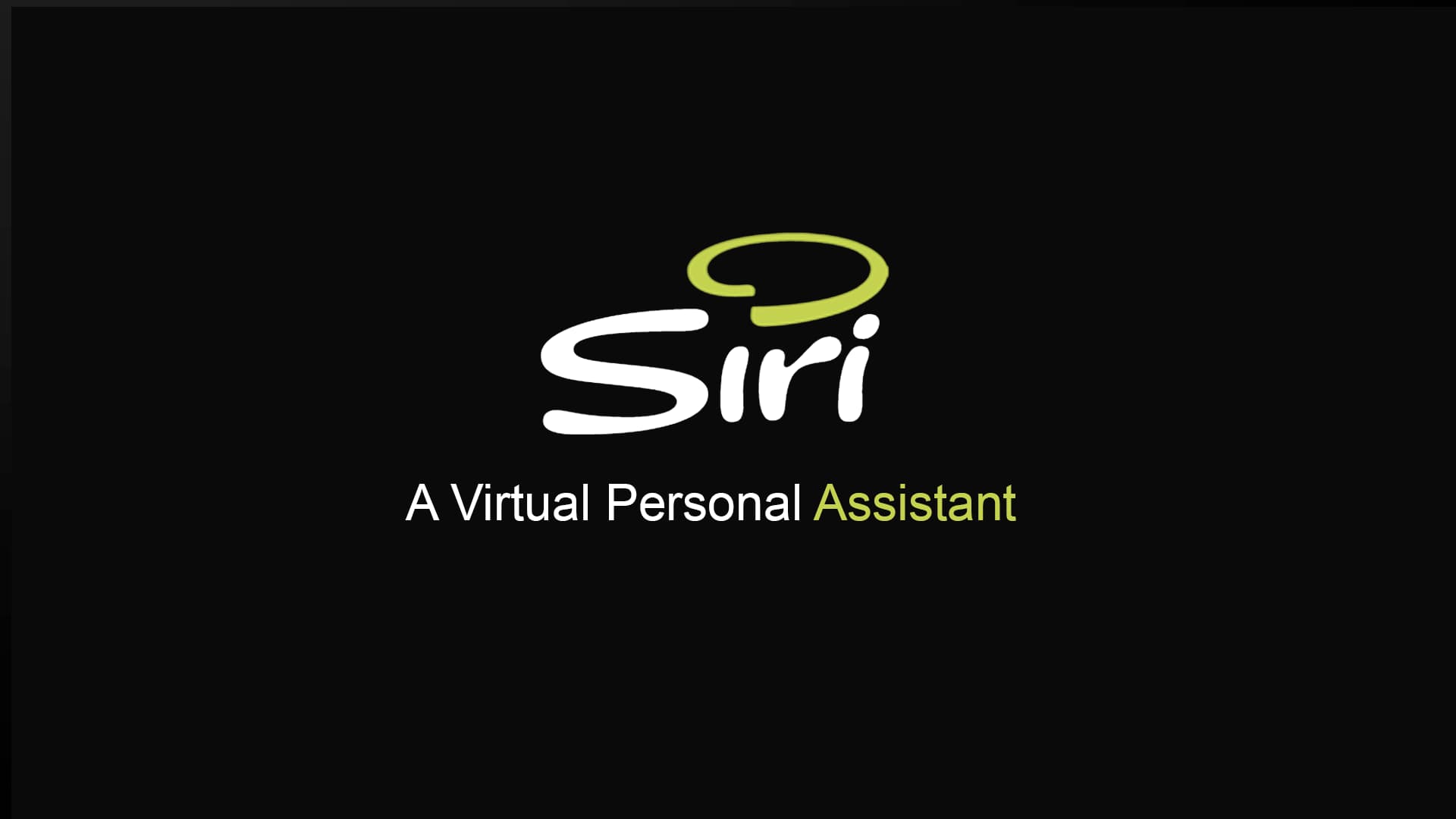AI
Topics:
What Can AI Do for Humanity?

Topics:
Big Think Small Screen: How Semantic Computing in the Cloud Will Revolutionize the Consumer Experience on the Phone

Topics:
Siri: A Virtual Personal Assistant (2009)

Topics:
Intelligence at the Interface: Semantic Technology and the Consumer Internet Experience

Topics:
Language Savants: Risks and Opportunities of Generative BS

Topics:
The Speakeasy Communication Prosthesis System
Thomas Gruber (1984). The Speakeasy Communication Prosthesis System. Department of Computer and Information Science, University of Massachusetts, COINS Technical Report 84-22, August 1984.
Communication prosthesis is a means by which profoundly disabled, nonvocal individuals, for whom ordinary modes of communication are difficult or impossible, may express themselves. Conventional prosthetic techniques are inflexible and limited in coverage, and require special skills of the listener and speaker. Computer prosthesis promises to address these shortcomings, and to provide a powerful new technology for serving the communication needs of the disabled. The most important feature of a computer prosthesis system is the user interface. A model of a user interface for computer prosthesis is presented in which the computer takes the role of an intelligent communication assistant. The assistant presents information to the disabled user, who makes a choice by giving a unitary response (using a very simple and inexpensive device). The assistant interprets the response in the context of the interactive session, and then generates output which conveys the user’s meaning. The details of the model are described in terms of the information flow which occurs between the user, assistant, and the outside world. The model is implemented in a computer program called SpeakEasy designed as a real world application in communication prosthesis.
Topics:
Thomas Gruber (2005). Ontology of Folksonomy: A Mash-up of Apples and Oranges. Int’l Journal on Semantic Web & Information Systems, 3(2), 2007.
A rebuttal to a popular anti-ontology blog, with a constructive call to action. Showed how “Folksonomy” isn’t incompatible with formal ontology and showed how to get the benefits of both.
Originally presented as an invited keynote to the First on-Line conference on Metadata and Semantics Research (MTSR’05) and released on www.metadata-semantics.org (no longer active). Published to the journal in 2007.
Topics:
Mark Cutkosky, Robert S. Engelmore, Richard E. Fikes, Thomas R. Gruber, Michael R. Genesereth, William S. Mark, Jay M. Tenenbaum, and Jay C. Weber. (1993). PACT: An experiment in integrating concurrent engineering systems. IEEE Computer, 26(1), 1993, pp. 28-37.
Reference: Cutkosky, M. R.; Engelmore, R. S.; Fikes, R. E.; Genesereth, M. R.; Gruber, T. R.; Mark, W. S.; Tenenbaum, J. M.; & Weber, J. C. PACT: An Experiment in Integrating Concurrent Engineering Systems. 1993.
Abstract: The Palo Alto Collaborative Testbed (PACT) is a joint experiment in concurrent engineering being pursued by research groups at Stanford University, Lockheed, Hewlett-Packard, and Enterprise Integration Technologies. The current prototype integrates four preexisting concurrent engineering systems into a common framework. Each of the individual systems is used to model different aspects of a small robotic manipulator, and to reason about them from a different discipline (dynamics, digitial electronics, and software). The initial PACT experiments have explored knowledge sharing in the context of a distributed simulation and simple incremental redesign scenario.
Notes: Submitted February 1993.
Topics:
James G. McGuire, Daniel R. Kuokka, Jay C. Weber, Jay M. Tenenbaum, Thomas R. Gruber, and Greg R. Olsen. (1993). SHADE: Technology for knowledge-based collaborative engineering. Journal of Concurrent Engineering: Applications and Research (CERA), 1(2), 1993.
Abstract: Effective information sharing and decision coordination are vital to collaborative product development and integrated manufacturing. However, typical special-purpose CAE systems tend to isolate information at tool boundaries, and typical integrated CAE systems tend to limit flexibility and process innovation. The SHADE (SHAred Dependency Engineering) project strikes a balance between these undesirable extremes by supporting reconfigurable exchange of engineering knowledge among special-purpose CAE systems. SHADE’s approach has three main components: a shared knowledge representation (language and domain-specific vocabulary), protocols supporting information exchange for change notification and subscription, and facilitation services for content-directed routing and intelligent matching of information consumers and producers.
Topics:
A Generic Knowledge-Base Access Protocol
Peter D. Karp and Thomas R. Gruber (1995). A Generic Knowledge-base Access Protocol. Proceedings of the International Joint Conferences on Artificial Intelligence, Montreal, 1995.
An ontology-based knowledge sharing API for AI people.
End of content
End of content